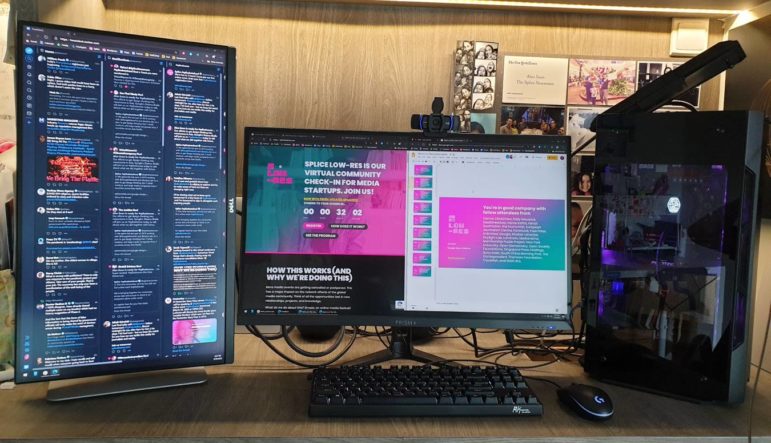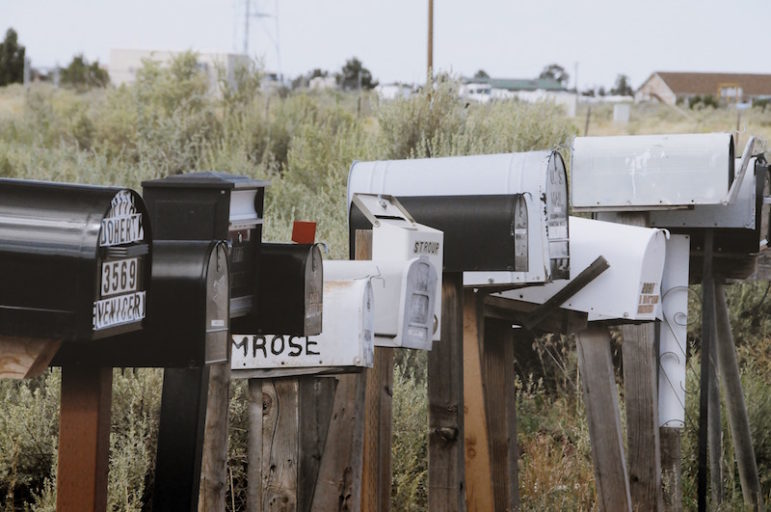

Want to Launch a Membership Program? Here Are 6 Things to Consider
Paywalls, live events, special print editions, paid newsletters, the list goes on. From new editorial products to exclusive experiences, news organizations of all types and sizes are looking for new revenue streams.
To find a sustainable way to make the ends meet and regain the trust of the audience in the process, newsrooms can find in membership schemes a promising way forward, a way to restore a broken system.
On the occasion of the latest News Impact Academy, a training program run by the European Journalism Centre and powered by the Google News Initiative, we gathered a group of 20 media professionals in Warsaw to unravel the nitty-gritty of membership models. Under the guidance of Emily Goligoski, research director of the Membership Puzzle Project, we reflected on the many pieces that have to fit together if we want our communities to support and contribute to our journalism.
“Make members your most important stakeholders, not advertisers. This means that business goals and editorial processes are aligned,” said Goligoski at the beginning of the academy. This change of paradigm must be at the core of any system designed to build upon the engagement of its end users.
If you are thinking about launching a membership program, these are six questions that you should put on the table before taking the leap:
1. Who are your communities and how well do you know them?
As Goligoski explained: “You don’t have only one faceless audience, but many different audiences with a significant diversity within.” And if you want them to be part of your project, you need to know who they are.
User research is key to start designing a membership program. It will give you invaluable insights about the people you want to address: their habits and routines, where to find them, their needs and the subjects that truly matter to them. Without this information, you might not be able to tap into the potential of your journalism, your target users will not see the need to engage and your efforts will get lost in the noise.
During the academy, we had the opportunity to meet Adam Cantwell-Corn and Lucas Batt, co-founder and membership coordinator of The Bristol Cable. The publication is a great example of an alternative co-operative model, being fully owned by its 2,000 members, who pay, on average, £3 each every month.
At the beginning of their project, they invested months in creating a community around it, reaching out to people and establishing meaningful connections with them. Only after this, they started to produce and publish content. As Cantwell-Corn put it:
“It’s a process of understanding what people need, think and wish, rather than just asking directly what they want.”
2. What unique value are you offering to your members?
People will only be willing to pay and support you if they find in your organization something that they can’t obtain anywhere else. It’s not about quantity, but quality, focus and authenticity. Once you know how your journalism contributes to the community, make sure that the message is received.
Your users have different motivations to support you. Some want to have full access to your content, others believe deeply in your mission; look for a sense of exclusivity or the opportunity to become part of something bigger and to meet a community with shared values.
Think about your users’ needs and find out if you can fulfill them. It’s also important to keep in mind the fine but essential balance between giving our audiences what they say they want and what they actually need.
3. What do you need from your members?
The answer should not just be “financial support.” Once you understand how your members can become involved in various ways, your membership model will reach its potential and become truly inclusive.
Besides monthly or yearly monetary contributions, you should also consider asking for time, skills and expertise. Your members will appreciate being able to contribute in different capacities. For instance, if someone wants to share knowledge with you, they can help you out with their professional expertise, from legal advice to editing content.
Another contribution from users that we should always seek is their feedback. People want to be heard and listened to, and our work can benefit immensely from the honest opinions of the people that we’re looking to serve.
“By choosing to pay in participation rather than in dollars, readers are brought into the news production process in more immersive and colorful ways. Both the newsroom and the audience are part of the same adventure,” explained Goligoski.
4. How do you feel about being transparent and vulnerable?
If you are not afraid of showing your vulnerability, you can put yourself out there and ask for the help you need. By being transparent you’ll be able to explain why you need your members’ contribution and, most importantly, earn their trust.
One of the many examples of transparency we heard at the academy was from a participant who explained how at the end of every long, in-depth story, they include the amount of hours they’ve dedicated to it and a breakdown of all the costs involved. Besides building trust, this practice also contributes in helping the reader understand how much it actually costs to do quality journalism.
Another participant talked about his experience in sending 500+ emails to users who had canceled their subscription, asking them why they had decided to leave. It was time-consuming, but he gained a better understanding on the users’ needs and useful suggestions on how to improve.
People want to be asked for their opinions and they want to know what happens behind the scenes. Be creative. Why don’t you invite readers to visit your newsroom? Or share the progress of an investigation you’re working on? If we are asking members to give their time or money, we must be forthcoming and committed to regularly showcase what they’re contributing to.
5. Are your workflows and colleagues ready for the change?
Keeping up the user engagement, taking care of your members and onboarding new ones come with extra work.
“Right now I spend more time answering emails than writing stories. And persuading the team to switch to a different mode of working also brings changes in the internal workflows.” This was the experience of one participant who had recently launched a membership scheme.
The challenges of running a membership program are many, and your newsroom should be ready with the strategy beforehand. Think about the resources to manage the community and all the new layers of engagement, communications and new editorial processes that making your journalism more participative entails.
A good way to support the editorial team might be to hire (people) with marketing or civic engagement backgrounds. Investing in software to facilitate user participation, and manage and answer feedback and comments is also something worth considering.
6. What other revenue streams do you have?
As Goligoski explained, in most cases membership represents only a fraction of the revenue a news organization needs to exist. For the majority of news organizations membership programs only make up 10 percent of their income.
Diversifying your revenue streams is fundamental in order to guarantee the sustainability of your news organization.
Crowdfunding has also become a widely used system to get financial support. But a crowdfunding campaign is more of a marathon than a sprint and it demands a lot of hard work. Many participants in the group had had experience with it and they all agreed that, even though it can be extremely helpful, launching a campaign also puts a lot of pressure on the organization. “If you don’t manage to reach the amount you asked for, your image will change forever; it’ll be seen as a big failure,” said one of them.
Experimenting with small pilot projects to involve your readers and get them to actively support your work is a safer way to get started. Then you can apply the lessons learned and develop a plan to scale and grow your community and membership program.
Despite the many financial and technical challenges that come with building a membership program, passion can play a key role in overcoming them. If you’re able to get rid of all the noise and focus your efforts on what really matters to your users, you’re already halfway there.
At the academy, all participants talked about the struggles and challenges they are facing, but what prevailed was the energy and the innovative ideas with which they went back to their newsrooms to roll up their sleeves and get back to work.
This post first appeared on the Medium site of GIJN-member European Journalism Centre and is reproduced here with permission.
 Paula Montañà Tor is a project manager at the European Journalism Centre (EJC), mainly working on the News Impact Academy. She has been with the EJC since early 2015.
Paula Montañà Tor is a project manager at the European Journalism Centre (EJC), mainly working on the News Impact Academy. She has been with the EJC since early 2015.












